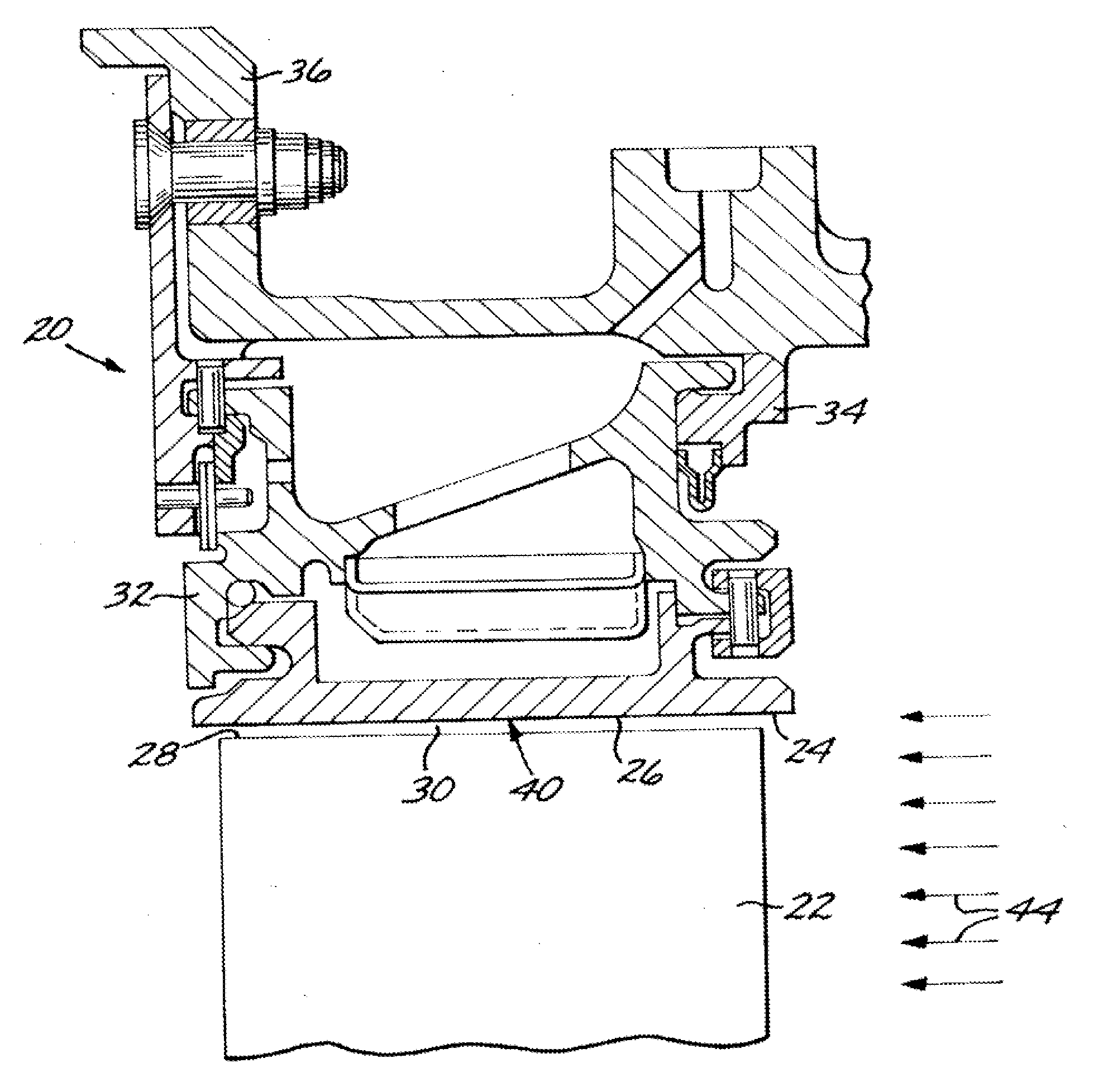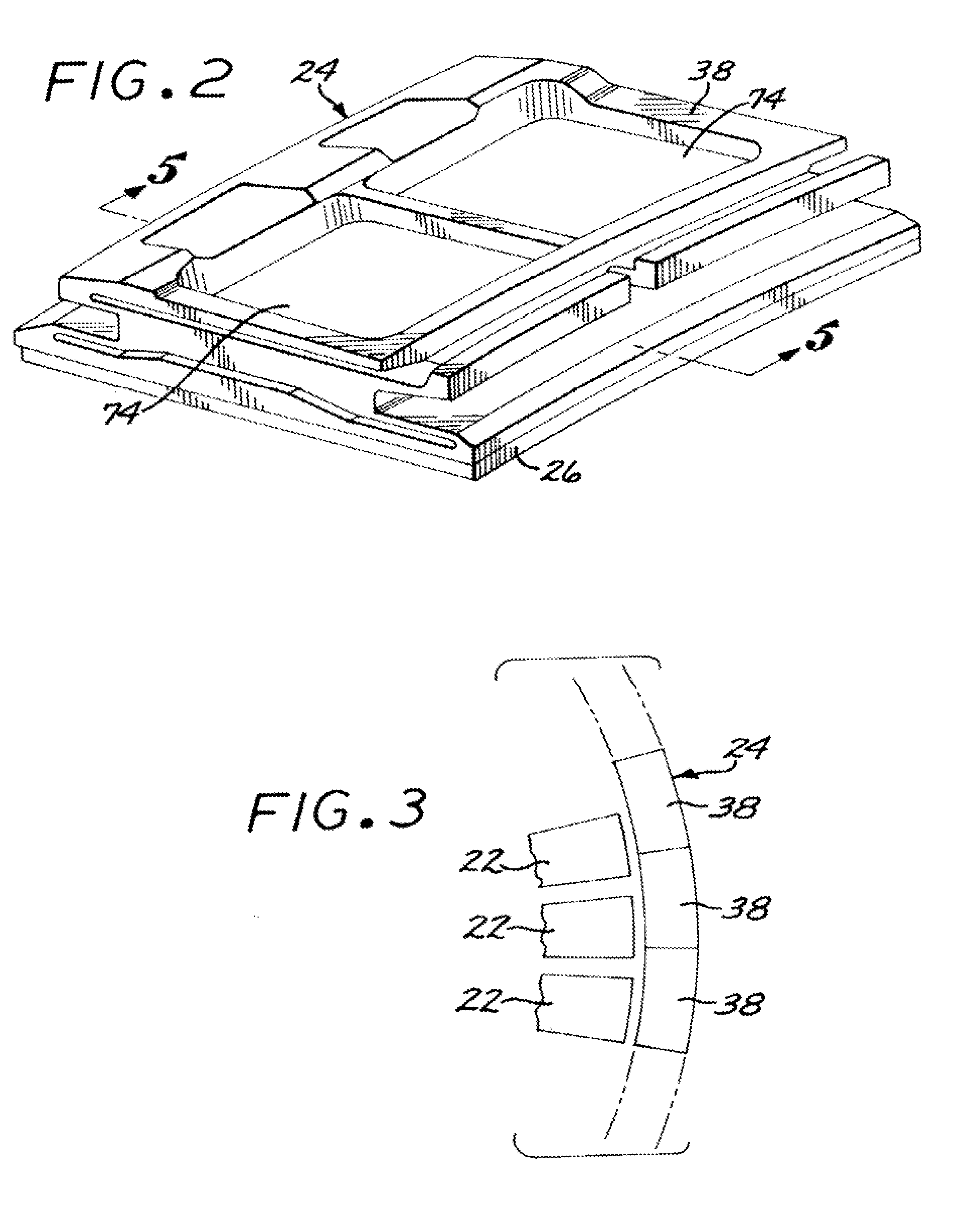Method of repairing a stationary shroud of a gas turbine engine using laser cladding
a gas turbine engine and laser cladding technology, which is applied in the direction of machines/engines, blade accessories, metallic material coating processes, etc., can solve the problems of oxidation, corrosion, abrasion of the gas path surface and the metal of the stationary cladding is typically not highly resistant, so as to improve the service life and reduce the process variation. , the effect of improving the service li
- Summary
- Abstract
- Description
- Claims
- Application Information
AI Technical Summary
Benefits of technology
Problems solved by technology
Method used
Image
Examples
Embodiment Construction
[0022]FIG. 1 is a cross-sectional view generally depicting a stationary shroud assembly 20 in relation to a turbine blade 22. The stationary shroud assembly 20 includes a stationary shroud 24 having a flow-path surface 26 in a facing relation to a turbine blade tip 28 of the turbine blade 22. (The term “stationary shroud” as used herein refers to structure which does not rotate as the turbine blade 22 turns with its supporting turbine disk (not shown) and turbine shaft (not shown). The stationary shroud 24 is to be distinguished from the rotating shroud that is found at the tip of some other types of blades and is a part of the blade, and which does not rotate as the blade turns.) A small gap 30 separates the flow-path surface 26 from the turbine blade tip 28. The smaller is the gap 30, a less hot combustion gas 44 that can leak through the gap 30 and not participate in driving the turbine blade 22. Also depicted are a stationary shroud support 32 from which the stationary shroud 22...
PUM
| Property | Measurement | Unit |
|---|---|---|
| weight percent | aaaaa | aaaaa |
| weight percent | aaaaa | aaaaa |
| weight percent | aaaaa | aaaaa |
Abstract
Description
Claims
Application Information
 Login to View More
Login to View More - R&D
- Intellectual Property
- Life Sciences
- Materials
- Tech Scout
- Unparalleled Data Quality
- Higher Quality Content
- 60% Fewer Hallucinations
Browse by: Latest US Patents, China's latest patents, Technical Efficacy Thesaurus, Application Domain, Technology Topic, Popular Technical Reports.
© 2025 PatSnap. All rights reserved.Legal|Privacy policy|Modern Slavery Act Transparency Statement|Sitemap|About US| Contact US: help@patsnap.com



